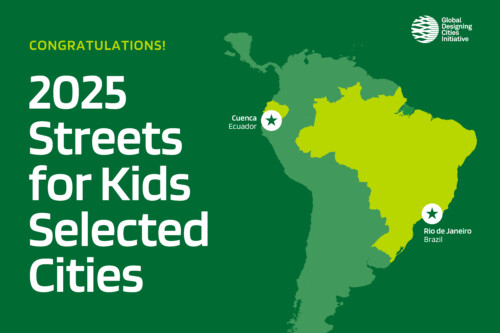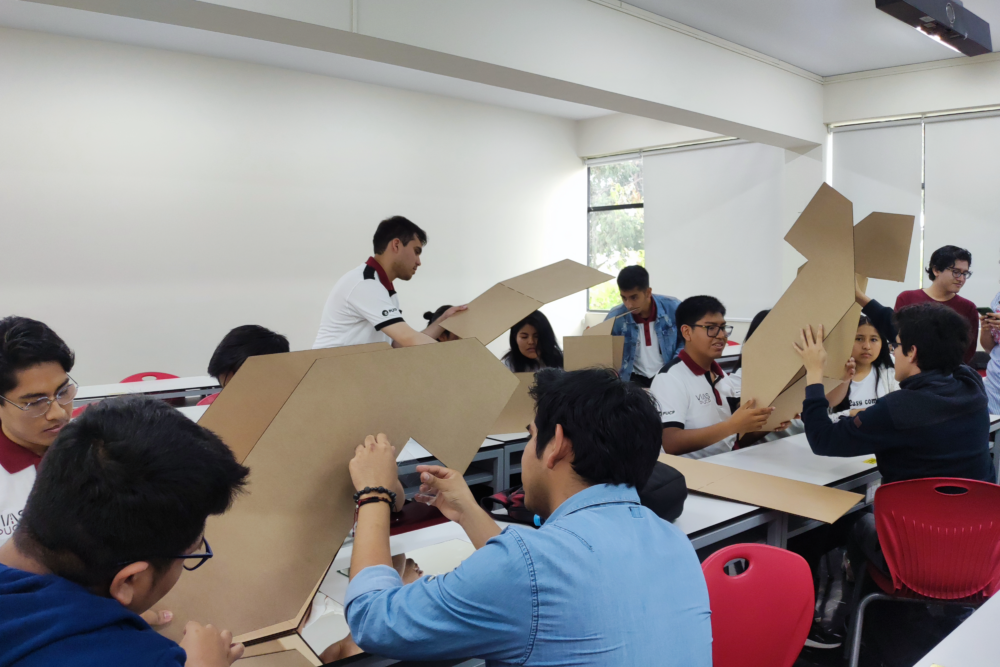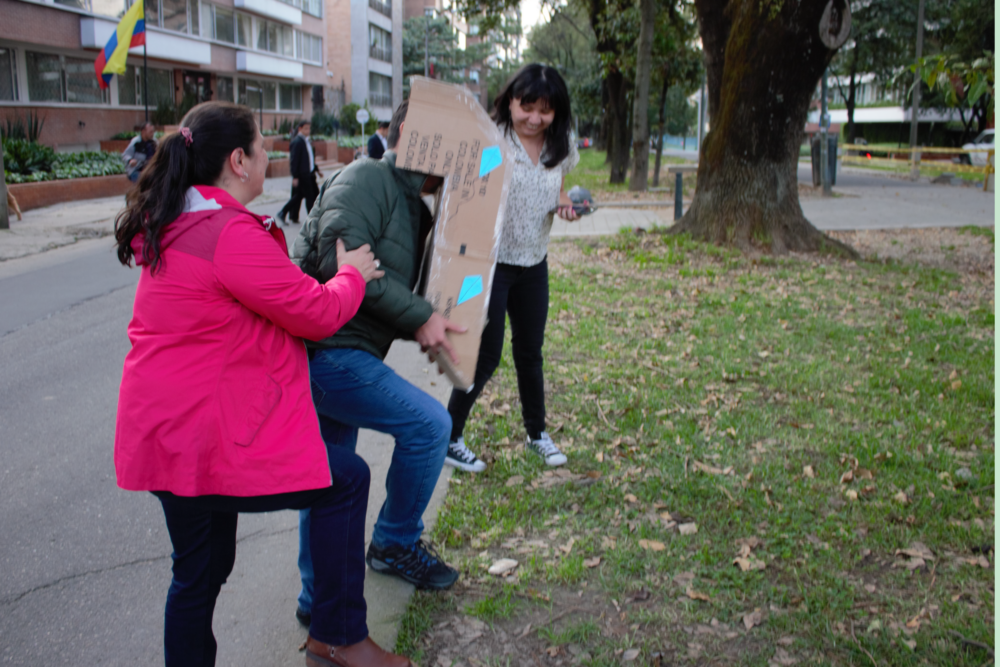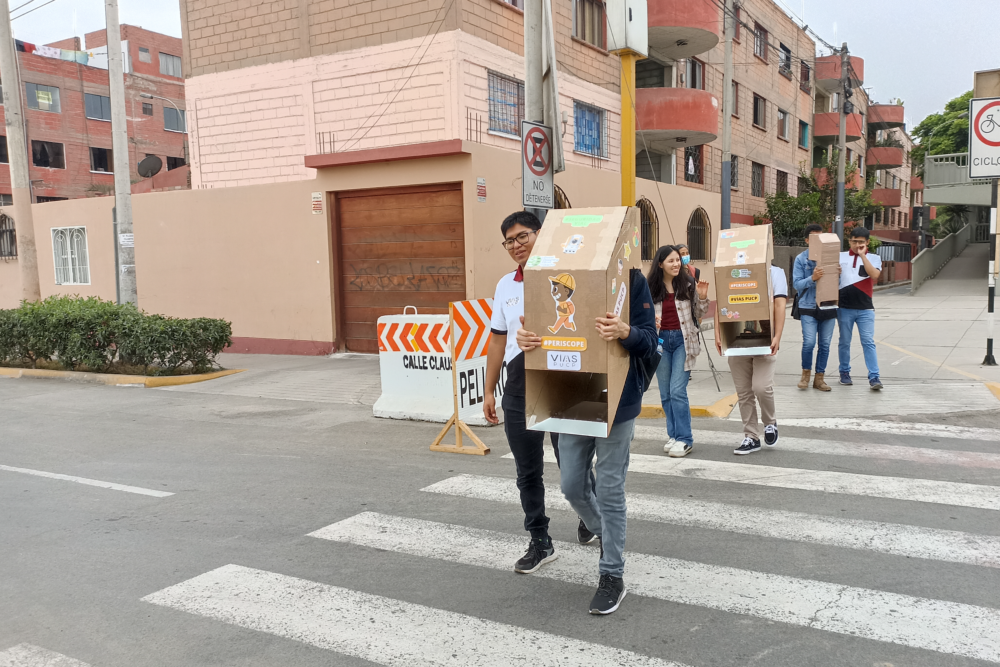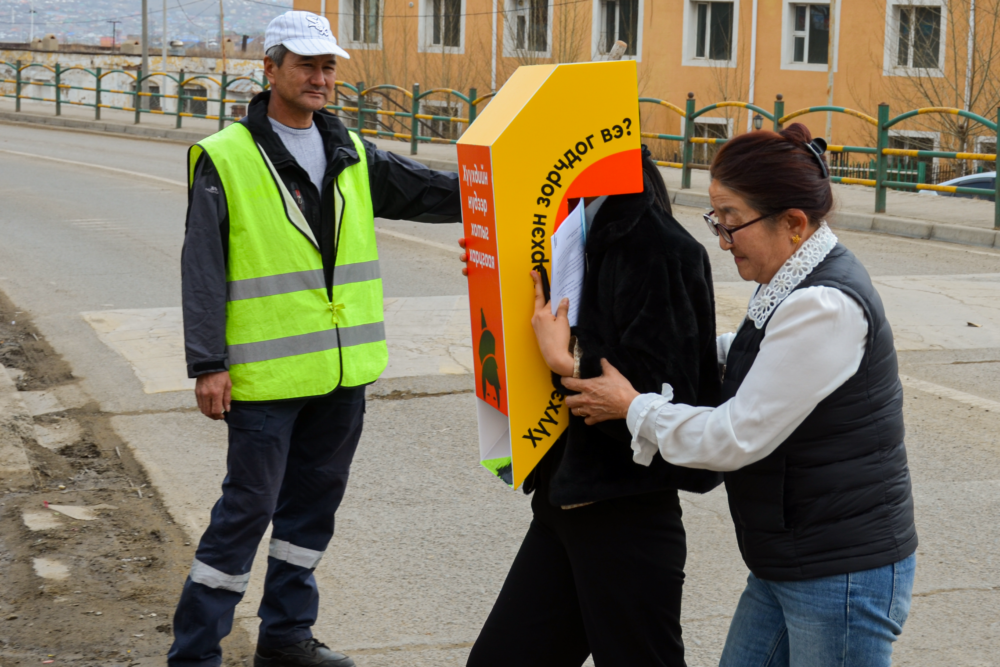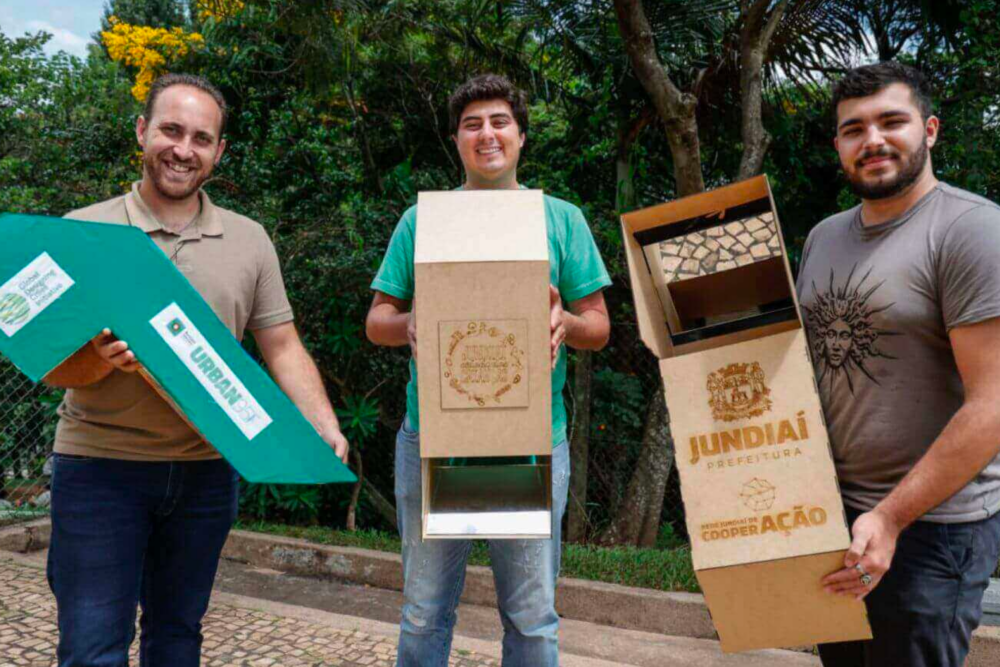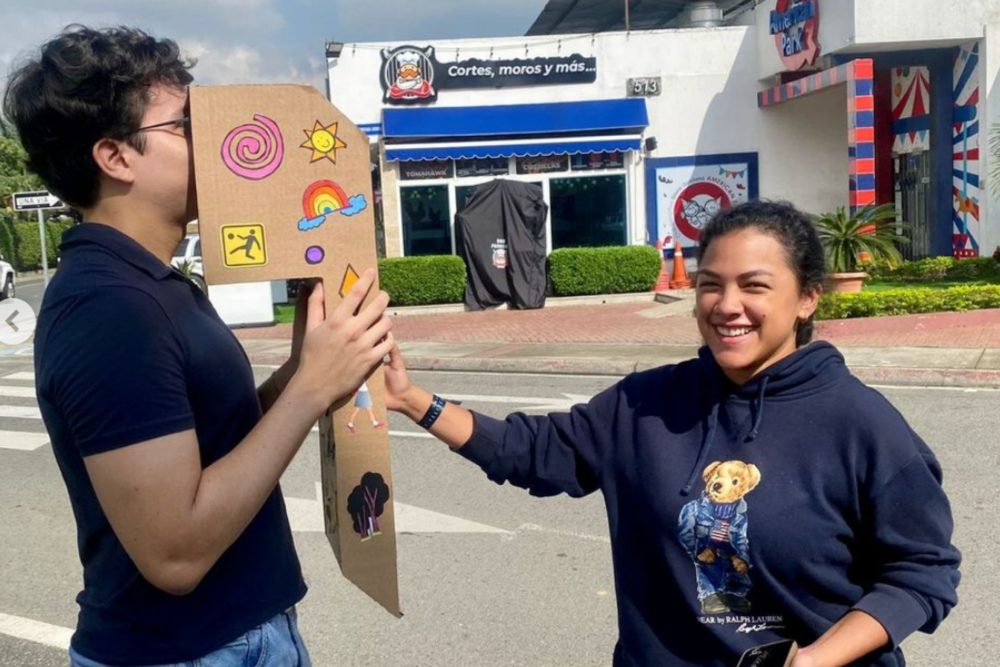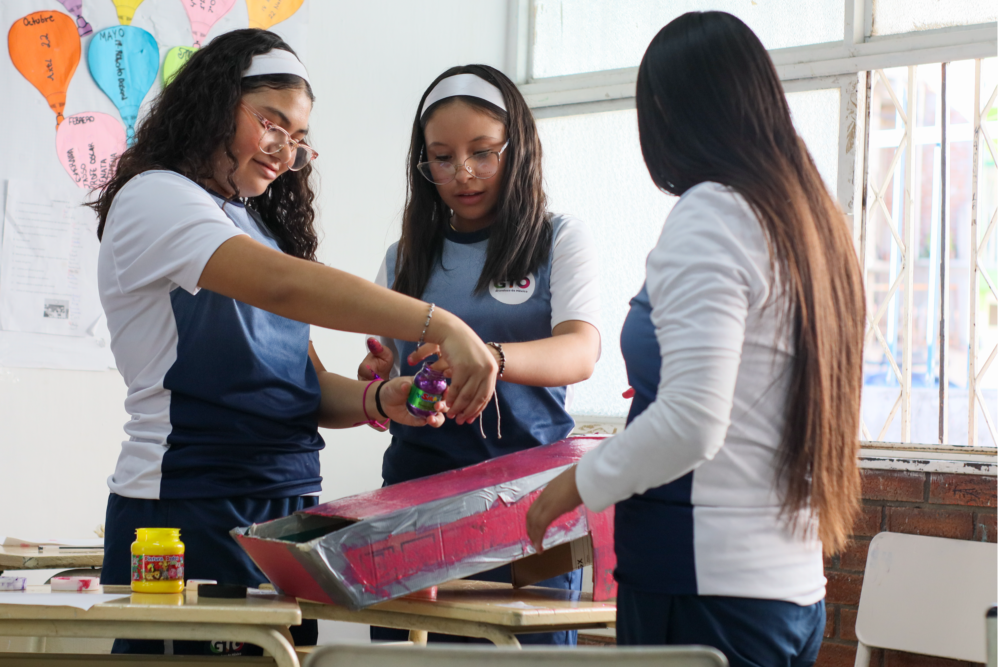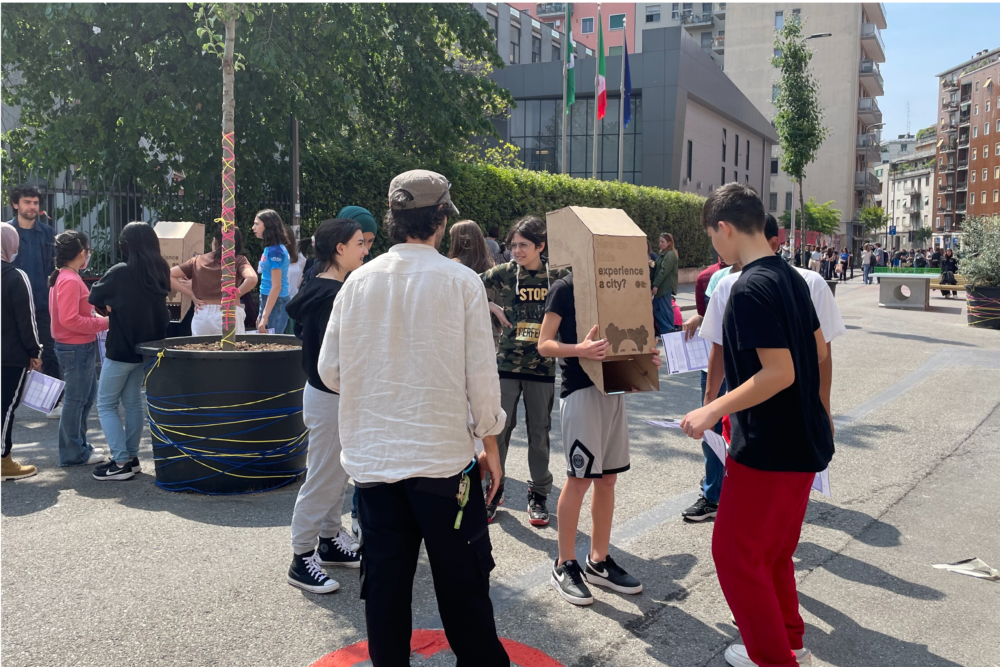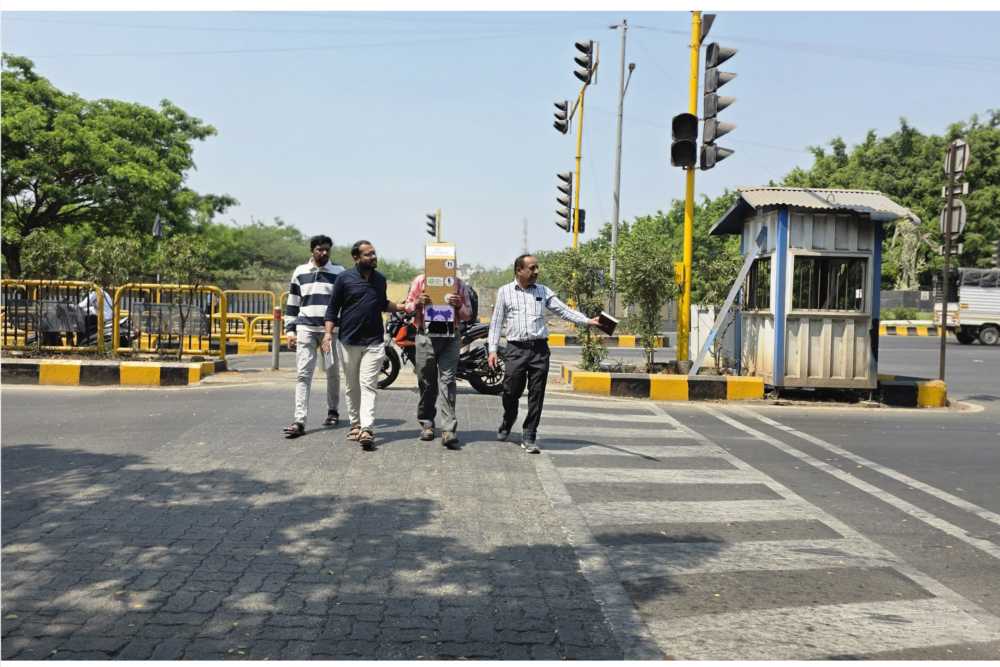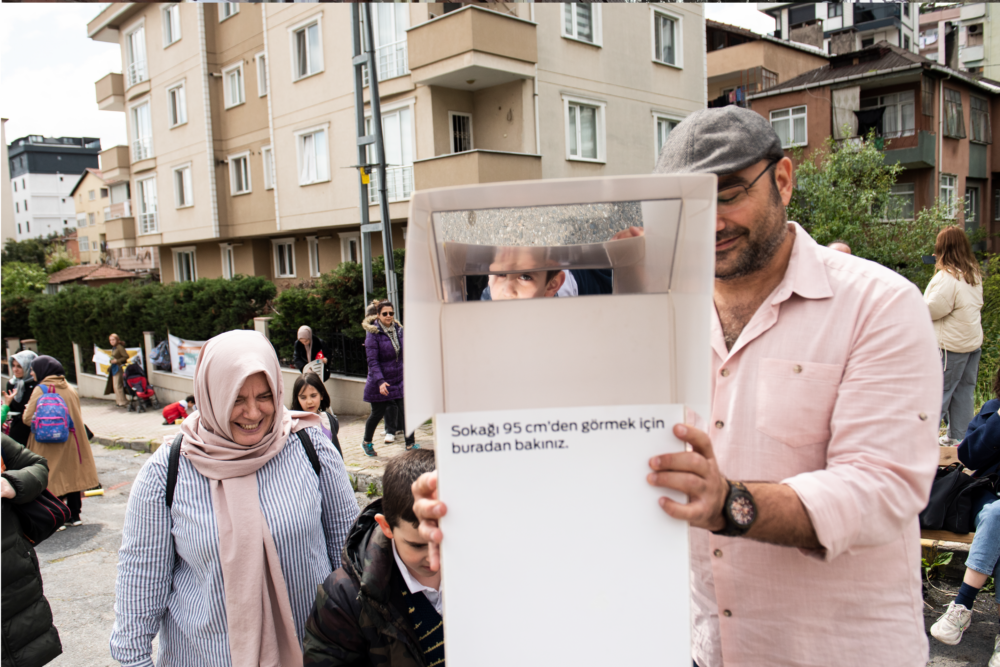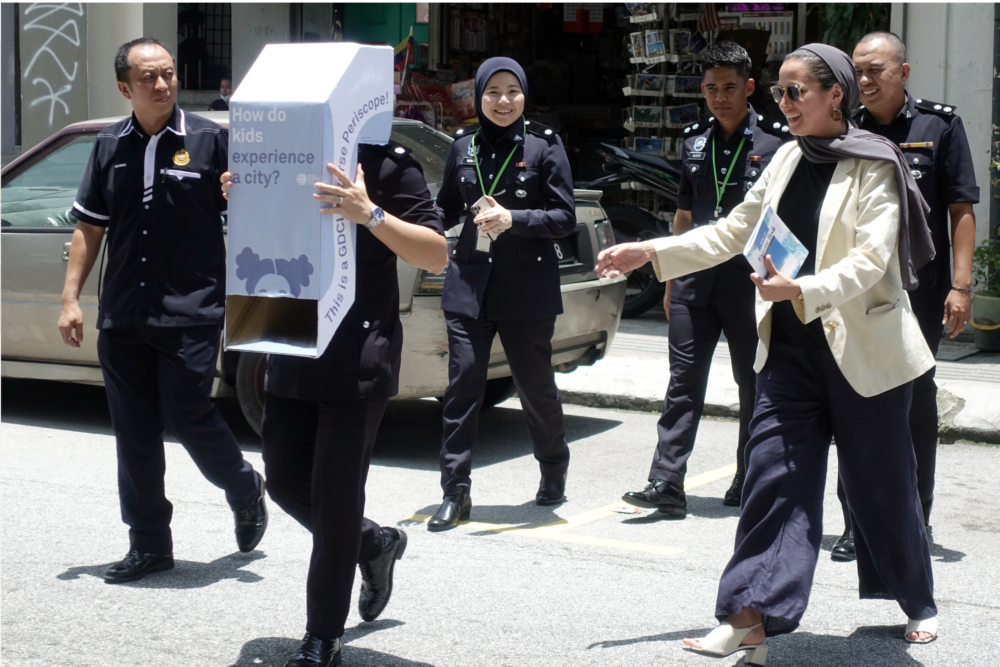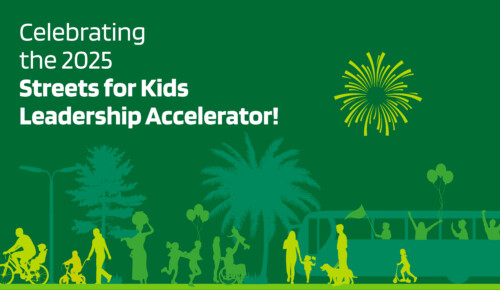In cities around the world, practitioners and communities are experiencing their streets from children’s eye level.
Around the world, children are common users of cities’ largest continuous network of public spaces, our streets. However, in many ways, our city streets are not designed to meet their needs. Have you ever wondered how kids experience different streets from their eye level? What makes them scary or unattractive? What makes them engaging and inviting? And if you have, have you looked for tools to get others in your city to reflect deeply on these questions?
In 2023, the GDCI Streets for Kids program launched a new resource, sharing a Do-it-yourself reverse periscope. The reverse periscope is a simple cardboard-and-mirrors device that lets adults experience a street from about 95 centimeters, the average height of a 3-year-old child. It’s designed to help adults better understand the sightlines, hazards, and uncertainties, as well as the unique and surprising aspects of navigating a world built for people twice as tall as them.
The companion guide and following webinar included a step-by-step tutorial on how to build the reverse periscope and tested ways to use it to support street design efforts effectively. As part of developing and refining the tool, we also invited two local partners from Despacio (Colombia) and Anidare and Lima Municipality (Peru) to help test and share their insights.
Download the companion guide or watch the webinar recording.
Since 2023, we have been thrilled to watch the reverse periscope gaining momentum in cities around the world. To date, over 2,600 guides have been downloaded, and the webinar has been viewed 500 times. To communicate the importance of designing safer, healthier, and more joyful Streets for Kids, we presented and guided reverse periscope walkshops in international conferences and special events, including the World Urban Forum (WUF), the Annual International Conferences on Urban Health (ICUH), Marmara Urban Forum (MARUF), Start with Children, National Congress of the Portuguese Network of Educating Cities and others. We have been incredibly delighted to see other organizations, researchers, and communities adapt to it and make it their own.
GDCI has supported cities in using the reverse periscope to achieve multiple goals. As part of street transformation projects, it’s often an easy and fun way to start a conversation with stakeholders and open a broader discussion about shared goals. In Cuenca, Ecuador, project stakeholders first built the reverse periscope and then took it to the city streets and boarded public transportation to reflect on the challenges and opportunities the project would have for children in the area. In Kuala Lumpur, Malaysia, it was part of an accessibility-focused activity that invited police officers to experience the streets from the perspective of children and people using wheelchairs. In Istanbul, Turkey, the reverse periscope was included in site tours as part of the Marmara Municipalities Union “Reclaiming Streets” program, which invites city champions to implement tactical transformations near schools.
More widely, the reverse periscope is a fun conversation starter with local communities interested in creating child-friendly environments such as León, Mexico; Recife, Brazil; Cerillos, Chile; Milan, Italy; Accra, Ghana; Pimpri-Chinchwad, India; Solo, Indonesia; and many others. While designed for adults, it has proven to be equally engaging for teens to encourage them to consider the perspectives of different street users in their communities. In our projects, we found the reverse periscope particularly suitable for pop-up and community events where children and caregivers take turns experiencing their streets from each other’s point of view and unlocking the possibilities of the largest network of connected public spaces – our streets.
Download How to Engage Kids in Street Design for more tips for using the reverse periscope.
How can you use the reverse periscope in your city?
As we continue to work with cities around the world to create better Streets for Kids, we’re happy to update more resources to build, print and use the reverse periscope. Here are easy-to-access resources:
New:
With the support of our funders, GDCI is proud to offer our tools for open and free use. Social media engagement helps us track feedback and reception! Please tag us at @GlobalStreets on X or @global.streets on Instagram, and use the hashtag #StreetsforKids. If you’d like your case study to be showcased by GDCI, please fill out the following form below:
